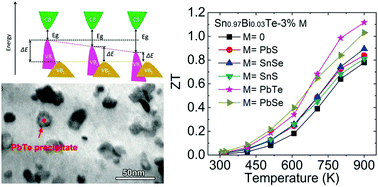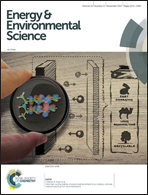Simultaneously enhancing the power factor and reducing the thermal conductivity of SnTe via introducing its analogues†
Abstract
Nowadays, extensive endeavors have been made to explore the potential thermoelectric performance of SnTe through either enhancing the power factor or reducing its thermal conductivity. Herein, we report that both the power factor and thermal conductivity of SnTe can be simultaneously improved through introducing its analogues (PbTe, PbSe, PbS, SnSe, and SnS) into the SnTe matrix. We found that the power factor of SnTe could be greatly enhanced over the whole temperature range through modifying its band structure via alloying with its analogues, which is supported by density functional calculations. Meanwhile when the solubility limit of PbTe is exceeded, aberration-corrected scanning transmission electron microscopy observations reveal a hierarchical architecture with multi-scale structural defects, resulting in a very low thermal conductivity through scattering phonons of a wide range of wavelength. The combination of simultaneously enhanced power factor and depressed thermal conductivity leads to a maximum ZT ∼ 1.1 at 900 K and a high average ZT ∼ 0.52 at 300–900 K for Sn0.97Bi0.03Te–3% PbTe, generating a high conversion efficiency of ∼10%. The present results indicate that SnTe is a robust candidate for medium-temperature thermoelectric power generation.



 Please wait while we load your content...
Please wait while we load your content...